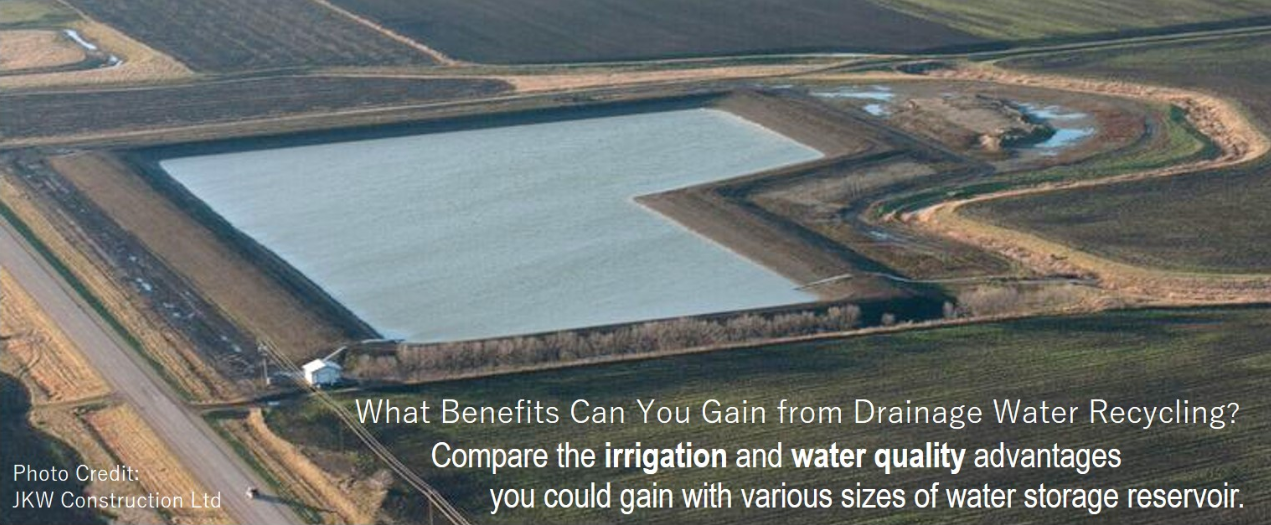
EDWRD provides an estimate of the potential benefits that result from capturing drained agricultural water in various sizes of water storage reservoirs (e.g., pond, reservoir, storage tank, etc.) for reuse as irrigation, a practice referred to as drainage water recycling. The benefits of drainage water recycling include (1) supplemental crop irrigation from the captured water, and (2) reduction of the discharge of nutrient-rich drainage water into downstream water bodies.
This tool can be used to evaluate multiple different scenarios and compare the influence of different factors, such as reservoir size, crop, soil type, and management, on the potential benefits of drainage water recycling. EDWRD can be used to answer questions such as
- How large of a reservoir is needed to irrigate a particular field?
- If only a certain amount of land is available for a reservoir, how many acres can be irrigated?
- What is the average annual amount of dissolved nitrogen and phosphorus that a reservoir can capture, to prevent those nutrients from being discharged downstream?
- What impact will a change in irrigation management have on the irrigation sufficiency or nutrient load reduction from a given reservoir size?
EDWRD conducts a daily water balance for a tile-drained field and reservoir and can incorporate water inflows from both surface runoff and tile drainage. Crop evapotranspiration (ET) is calculated following the FAO-56 dual crop coefficient approach using information about the local weather, soils, crop, and drainage patterns.
See Questions and Answers About Drainage Water Recycling for the Midwest for more information on this practice. You can find out more about methods used by EDWRD in the tool documentation and the associated peer-reviewed articles (Reinhart et al. 2019, Reinhart et al. 2020).
This material is based upon work that is supported by the National Institute of Food and Agriculture, U.S. Department of Agriculture (award numbers 2015-68007-23193, 2017-67026-26317) and the U.S. EPA (award number 83675301). Any opinions, findings, conclusions, or recommendations expressed in this publication are those of the author(s) and do not necessarily reflect the view of the U.S. Department of Agriculture or U.S. EPA.
